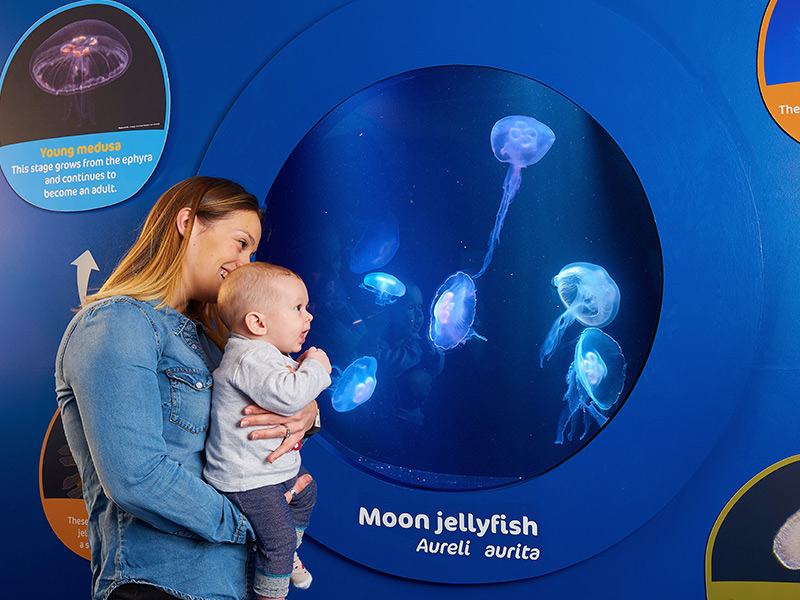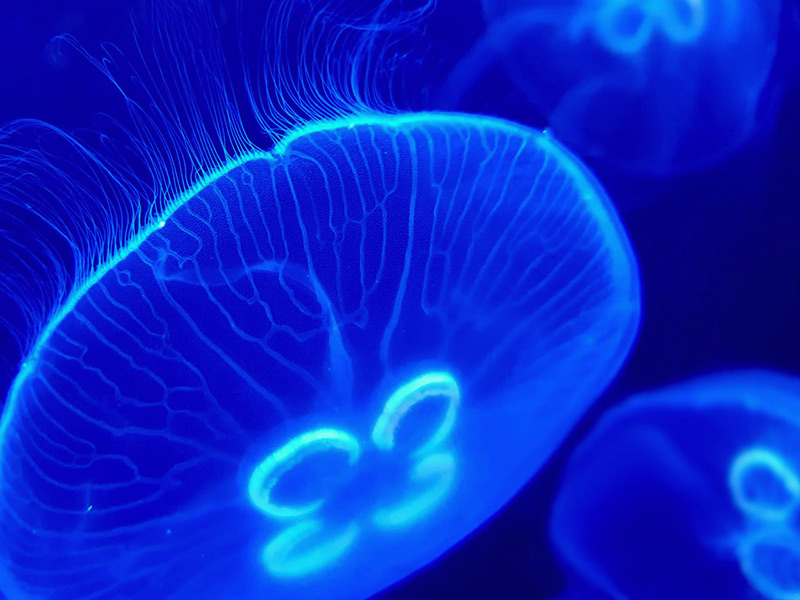Hurry! Offer ends soon!


Moon Jellyfish










There are several varieties of jellyfish that include stinging types called medusae and non-stinging types called ctenophores. Moon Jellyfish fall within the non-stinging category, although they have stings they are not strong enough to sting a human.
Their body is a saucer shaped 'bell', which is colourless. The outer edges are fringed with many small tentacles, and four 'arms' surround the mouth
Their diet consists of plankton, molluscs, crustaceans, young worms and copepods. They normally feed by trapping the plankton in a film of mucus which flows over the surface of the bell and is picked off as it reaches the edges by the thick mouth tentacles underneath.
Most jellyfish live less than one year, and some some of the smallest may live only a few days. Each species has a natural life cycle in which the jellyfish form is only part of the life cycle.
The Oceanarium is home to moon jellyfish which are located downstairs near the underwater viewing of the penguins and the Kids’ Play Zone.
Get the best price!